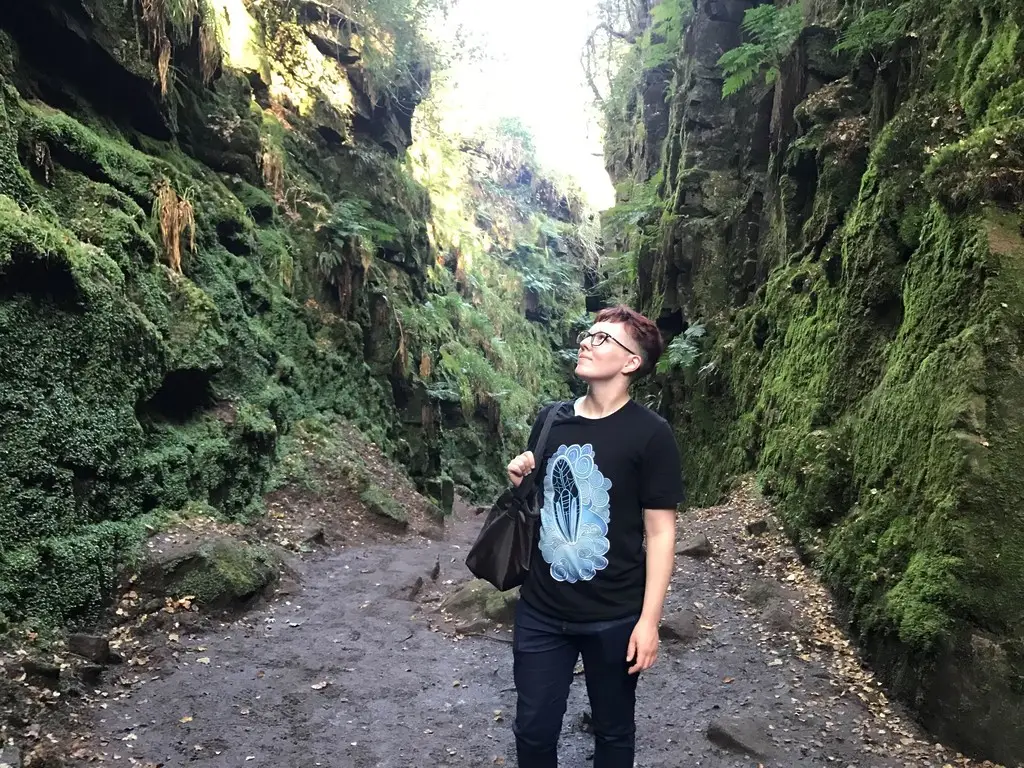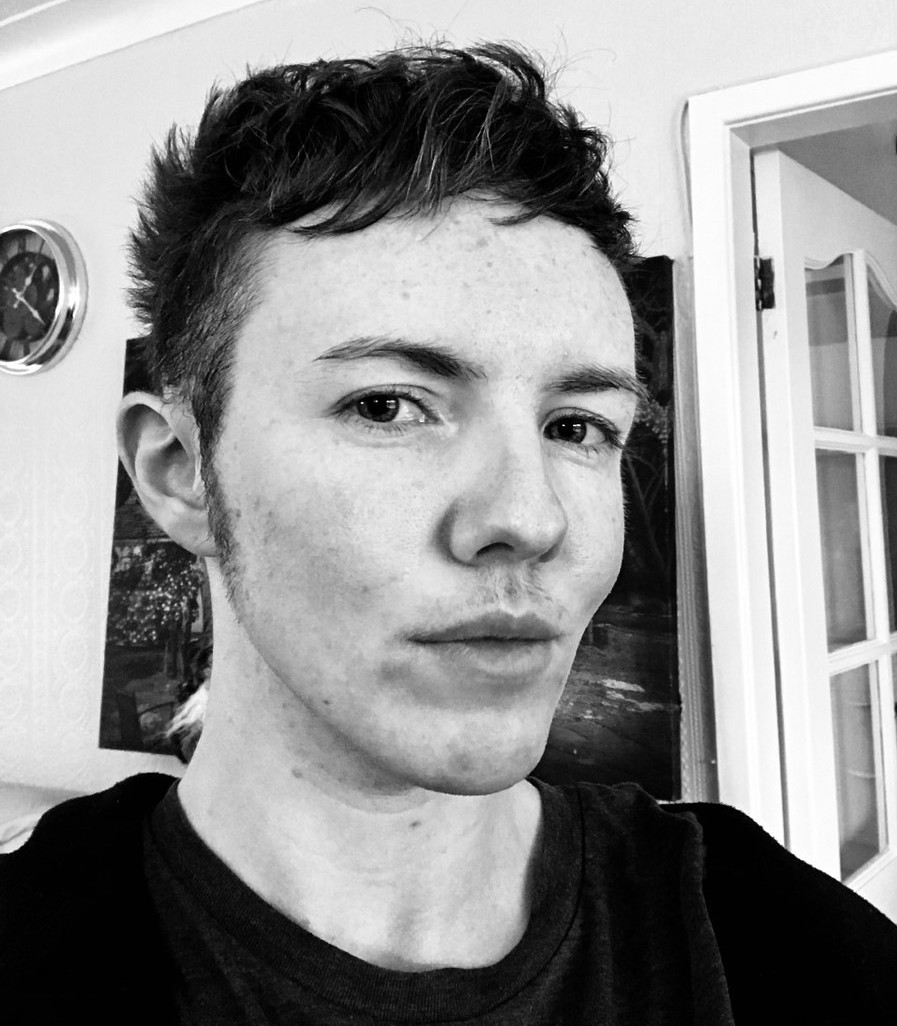By: William Cuthbert (he/they)
Into the light: my story of trans visibility through lockdown and beyond
In 2020, I began to become myself. Out of the depths of COVID-19, the reasons I felt less than whole came to light. I sensed them like a thick dark line under a former life spent not knowing who I was. I’d needed a transition, in more ways than one. The transformative force of lockdown’s imposed privacy provided the realization. That black hole I felt inside of me wasn’t emptiness. It contained all my unfulfilled personal power as a trans man.
In the calm and quiet I’d been offered to explore who I was away from people I didn’t feel safe with, I committed to meditation practice—the way I’d meant to for years. Meditation began a healing process of finally looking inside for self-definition. Those private exercises in becoming visible to myself were supported even more by reading transmasculine stories—one in particular. I read “The Weight of Them” by Nate Stevenson (he/him). The autobio comic shows the author’s own journey towards top surgery, navigating pronouns and, like me, shedding the burden of fitting in as a woman. The thought that my body didn’t represent my identity hadn’t occurred to me before that life-altering read. Finding out folks could have gender-affirming double mastectomies was a gift I’d never known I wanted.
These windows onto my real soul seemed to come from nowhere, but they were opening out of being guided to know myself at last. The saying goes that you can’t be what you can’t see. Nate’s comic was my first time seeing a story that reflected my internal experience.
In December that same year, I came out as nonbinary to my husband in a flood of tears at the dining table. My daughter played close to our feet. All the fragility masking my identity tore free in the fear that, because of who I was, my life partner wouldn’t want me anymore.
“Of course I do,” he said, “I want you.” And of course, that was the only answer I should’ve expected.
I’m lucky enough to have found and made a family where I’m seen and accepted for who I am. But I’d been exposed as a child, in the age of exploitative talk shows like Jerry Springer, to the treatment of trans people as perverse impostors. I’d been convinced by my cultural surroundings that if I was to be myself, I’d be detestable, untouchable, unlovable.
This is the power of trans visibility, and the importance of TDOV. It allows more of us to see, know and express who we are, before we’re forced to spend years or decades questioning and fearing ourselves.
I shared my identity as nonbinary with the rest of my friends and family, believing that chapter of my journey complete. It wasn’t.
I still had to come to terms with my masculinity, which I managed around half a year after my first experience of coming out. Even before that, the man inside me took every opportunity to free himself a little more from my fear. I had a buzz cut that felt like a mistake at first, but soon became more affirming than any hairstyle I’d ever had in my life.
On walks with my family of three, my husband would sometimes hint that maybe I was a guy, and I’d laugh out loud into an impassive expanse of field and meadow. My laughter was part disbelief, and part something else—a feeling I now recognize as gender euphoria.
It took nearly 30 years of my life to be visible in my own mind, let alone share my genuine self in public. Correcting strangers who misgender me—a mind-bogglingly regular occurrence, considering my full sideburns—is still terrifying.
I’m fighting to quit a lifetime habit of diminishing myself as someone who was female-presenting and knew no other way to be. At the same time, I’m beginning to understand my femininity has its own power.
Though “nonbinary” didn’t turn out to be the whole truth of my identity, there’s a genderqueer twist to my masculinity. I see it as a form of defiance, showing how tender and gentle a “real man” can be. Maybe I landed on “nonbinary” first because my subconscious still needed to unlearn that manhood was opposed to the softness in my nature.
To me, it came as an ironic blessing to begin understanding my gender identity when it was safer for families, friends and communities to be apart. Separation was what I needed, cutting out the social noise that disrupted my sense of self. Now, I’m not hiding my transness under layers of mental pain. Opening myself up to others is something I’m learning to do for the first time.
It’s hard work. But if it means it might help others connect to themselves, and with our trans community, it’s work that’s well worth doing.
As the largest provider of gender-affirming care for the trans and nonbinary community, Plume is committed to providing information about many types of information, including questions about hormones like estrogen and testosterone, gender transitioning tips and experiences, and guidance on social transition and self care.
While we strive to include a diverse range of voices and expertise, not everything will be for every person. Each individual’s experience is unique, and the information Plume provides is not intended to be a substitute for professional medical advice, diagnosis, or treatment.
Always first seek the advice of your primary and/or specialist physician, the Plume Care Team, or other qualified health provider with any questions you may have regarding a medical condition, your mental health and emotional needs, or your health care needs regarding gender-affirming hormone therapy. If you are experiencing an emergency, including a mental health crisis, call 911 or reach out to Trans LifeLine.




